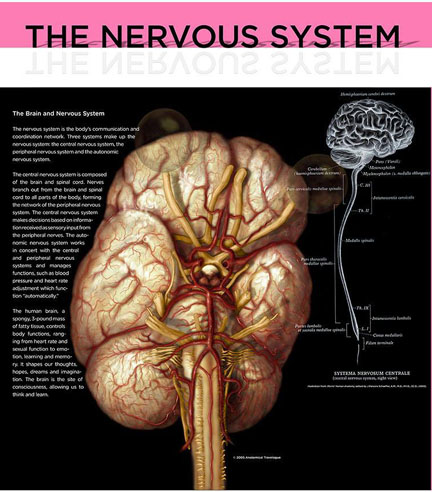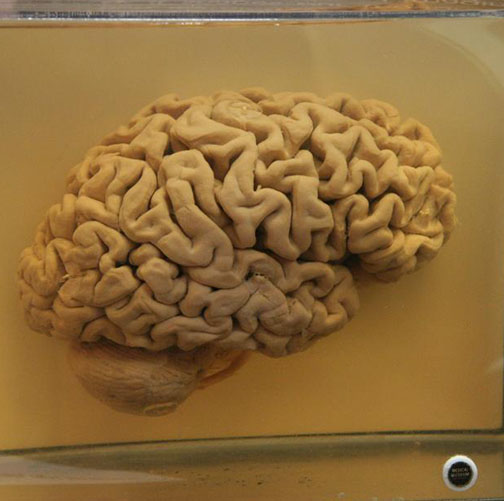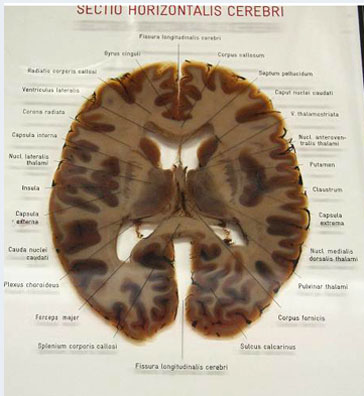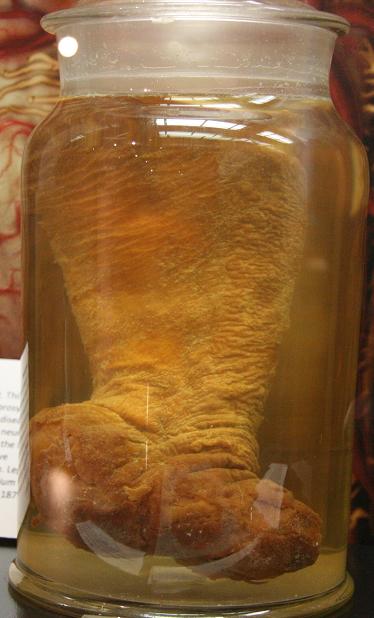Visibly Human Health and Disease in the Human Body
The Brain and Nervous System
 The nervous system is the body’s communication and coordination network. Three systems make up the nervous system: the central nervous system, the peripheral nervous system and the autonomic nervous system.
The nervous system is the body’s communication and coordination network. Three systems make up the nervous system: the central nervous system, the peripheral nervous system and the autonomic nervous system.
The central nervous system is composed of the brain and spinal cord. Cranial nerves branch out from the brain and spinal nerves branch from the spinal cord to innervate all parts of the body. These branching nerves form the network of the peripheral nervous system.
The central nervous system processes sensory input from the peripheral nerves, and if the impulse from the input is strong enough, a chemical reaction takes place eliciting muscle response. The autonomic nervous system works in concert with the central and peripheral nervous systems and manages basic functions, such as blood pressure and heart rate adjustment, which function "automatically."
The human brain is a spongy three-pound mass of white and gray matter that is composed of millions of dendrocytes, which are myelinated nerve fibers and cell bodies. Brain cells communicate with another by the movement of chemical signals across gap junctions between axons of the dendrocytes.

- Visibly Human Health and Disease in the Human Body
- The Cardiovascular System
- The Urinary System
- Respiratory System
- The Lymphatic System
- The Musculoskeletal System
- The Liver and Hepatic System
- The Digestive System
- The Brain and Nervous System
- Psychiatric Patients at Forest Glen
- Skeleton of Spanish American War Veteran Showing Evidence of Severe Arthritis







